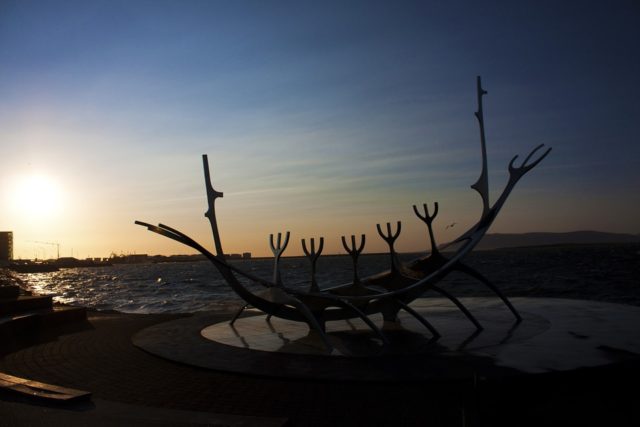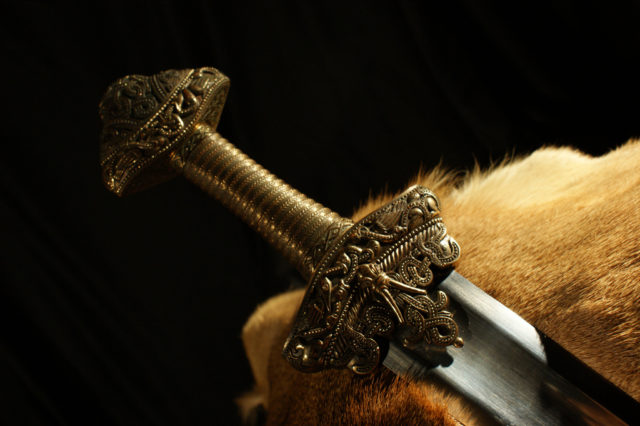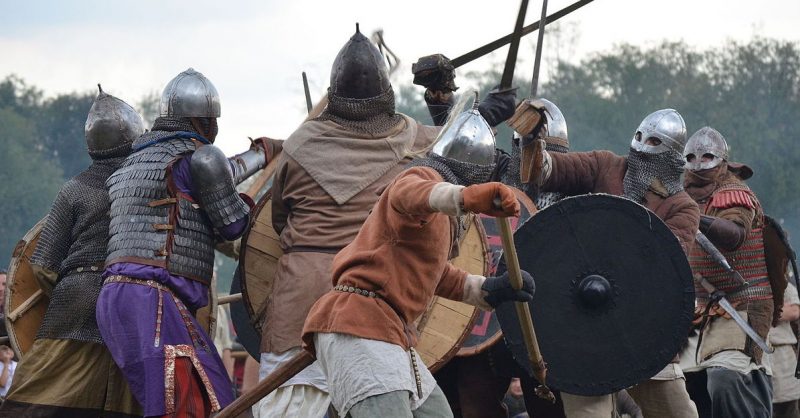Two great military forces dominated Europe in the 9th century. On the mainland was the Frankish Empire, a kingdom covering modern France and much of Germany, half a continent under the rule of a military monarchy. To the north were the Vikings, a disparate assortment of raiders and traders emerging from ice-bound Scandinavia, pillaging their neighbors before retreating to winter quarters. War was inevitable.
The Franks
The strength of the Franks lay in their cavalry. These were the predecessors of the medieval knights, a class of aristocratic armored warriors. Charging into battle as coordinated groups of shock troops, they were the heavy hitters of Europe’s battlefields. To face them was to be trampled beneath the hooves of the future of warfare.
The Vikings
The Vikings, on the other hand, were seafaring raiders. Though they used horses, particularly towards the end of the century, these were mostly for transport rather than battlefield combat.
With their swords, axes, and shields, the Vikings formed a formidable infantry force. Using their longboats to move swiftly along coastlines and up rivers, they launched surprise attacks wherever they went. Sudden violence struck fear into the population. While the Vikings were capable of standing their ground on a battlefield, this was not where their expertise lay. Terror was their weapon, and it forced many people to pay tribute to them.

1. Hamburg, 845
In 840, King Louis of the Franks died, and his kingdom descended into chaos. Torn apart by a war between his sons, in 843 Frankia became three kingdoms – East Frankia, West Frankia, and Middle Frankia, also known as Lotharingia. This created a perfect opportunity for the Vikings. Descending upon the previously intimidating Franks, they set to raiding.
In East Frankia, they sacked the town of Hamburg in 845. But Louis the German, the king of East Frankia, was a potent military commander. This was the last serious Viking raid in the east for 30 years.

2. Bordeaux, 848
The Vikings could be cunning as well as brutal. In 848, the citizens of Bordeaux believed that they had driven back an attack by the Raiders. But the Vikings returned at night, seizing the town in a surprise attack under cover of darkness.
King Charles the Bald of West Frankia, intervened in the Viking attack on Bordeaux, relieving a siege of the town. But this was not out of concern about the Vikings so much as the politics of the region, making a show of his power in rebellious Aquitaine.

3. Jeufosse, 852
In 852, two of the Frankish kings united to tackle the Viking threat. Lothar of the Middle Franks teamed up with Charles the Bald to blockade the Viking camp at Jeufosse, cutting off their routes of supply and raiding, fighting off any attempts to break out.
It could have been the moment the Franks broke a great Viking fleet, but instead, it came to nothing. Charles’s armies, knowing that no plunder was to be had in a defensive war, refused to stay in the field over Christmas. The blockade was abandoned, and the Vikings sailed free.

4. The Seine Raids, 856-862
The West Franks, ruled by Charles the Bald, were by far the most vulnerable. Threatened by the other Frankish kingdoms, separatists in Aquitaine and Brittany, and rebellious nobles, Charles struggled to fight back when the Vikings came.
From 856, the Vikings focussed their attention on the Seine valley. Some of the richest lands in all of Frankia, it included the burgeoning city of Paris, with all its wealth. Creating bases at Jeufosse and then Oissel, the Vikings raided up and down the Seine, using both longboats and horses to reach far into Charles’s territory.
Paris was sacked twice in quick succession, the locals cowering before the brutality of Viking raiders in both 856 and 857. Evreux, Bayeux, and Noyon were all among the important towns devastated by these raids. St Maur, like Paris, fell to the Raiders twice.
Charles managed to buy off some of these Vikings, but it was only by hiring other raiders from the Somme that he was eventually able to drive them away. In 862, the Seine Vikings left the Seine, but not Frankia.

5. St Denis, 857
Among the victims of the Seine Vikings were the monks at the monastery of St Denis.
On Easter morning, 857, the monks awoke to see riders approaching out of the dawn. It was the Vikings.
These raiders had chosen their timing carefully. Easter was the most important festival in the Christian calendar, a great distraction which would bring wealthy guests and rich gifts to an important religious house like St Denis. By riding overland and arriving at dawn, they ensured the element of surprise, giving them the best chance of taking wealthy noble prisoners.
6. Oissel, 861
The key moment in Charles’s breaking of the Seine fleet came in 861. Hiring Raiders under Weland to fight for him, he blockaded the Viking base at Oissel.
This was a far more effective siege than the one at Jeufosse. Filth, starvation, and misery descended upon the Viking camp. Forced to give up, they paid the besiegers and made an alliance with them in order to be allowed out.

7. Orléans, 854 and 856
Even before they were forced out of the Seine, some Vikings had instead been raiding further south, along the fertile Loire Valley.
One of the most important towns on the Loire, Orléans came under threat of a Viking attack in 854. The local Bishop teamed up with the bishop of Chartres to raise a force of ships and men. They drove the Vikings back up the Loire, saving Orléans.
But it was just a temporary respite. In 856 the Vikings returned and sacked Orléans, punishing the town for its resistance.
8. The Road from Le Mans, 866
The man most successful at fighting the Loire Vikings was Count Robert of Angers, who defeated them several times in the 860s. But in 866 he confronted a group of raiders returning from Le Mans and was killed in battle. One of the best hopes against the Vikings lay dead.
